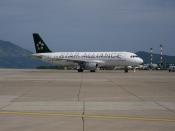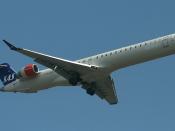The creation of Star Alliance is rooted in the deregulation of the Airline industry. Prior to that time most operators were viewed as inefficient carriers needing government support. Finally, governments had enough and decided to allow competitive forces eliminate inefficiencies from companies by deregulating the industry. One-way was to let new entrants into the marketplace and allow operating costs and prices to fluctuate depending on free market competition.
Deregulation ushered in alliances between many domestic and international carriers designed to increase routes. This "open skies" environment saw a free flow of travelers around the world. However, terrorism, a worldwide recession, and the Gulf war slowed air traffic by 25% (Bartlett, Ghoshal, & Birkinshaw, 2004). The terrorist's attack on September 11, 2004 dealt the airline industry another blow. With increased costs because of security and declining traffic, industry losses mounted to over $7 billion, which lead to over 200,000 job losses (Bartlett, et al.
2004). This new environment, along with the Internet and changing consumer behavior about air travel, created new low budget carriers such as Southwest, Ryanair, and easyJet.
In order to combat rising costs, decreased air travel, and low price carriers, airlines created alliances. These alliances increased competitive advantages for the member airlines by, combining marketing, procurement, systems, and even flight crews. By 1990 500 alliances were created. In May of 1997 Star Alliance was launched with Lufthansa, United, Air Canada, SAS, and Thai Airways. Today, Star alliance is the global leader, controlling 29% of the world's market share as measured by revenue passenger miles. A key strategy of Star Alliance is expansion. The recent addition of Air Portugal, South African Airways, Blue1, and Scandinavian Airlines, creates a network that covers 833 destinations in 152 countries (Mecham, 2004). However, the major target market is the large China market...


